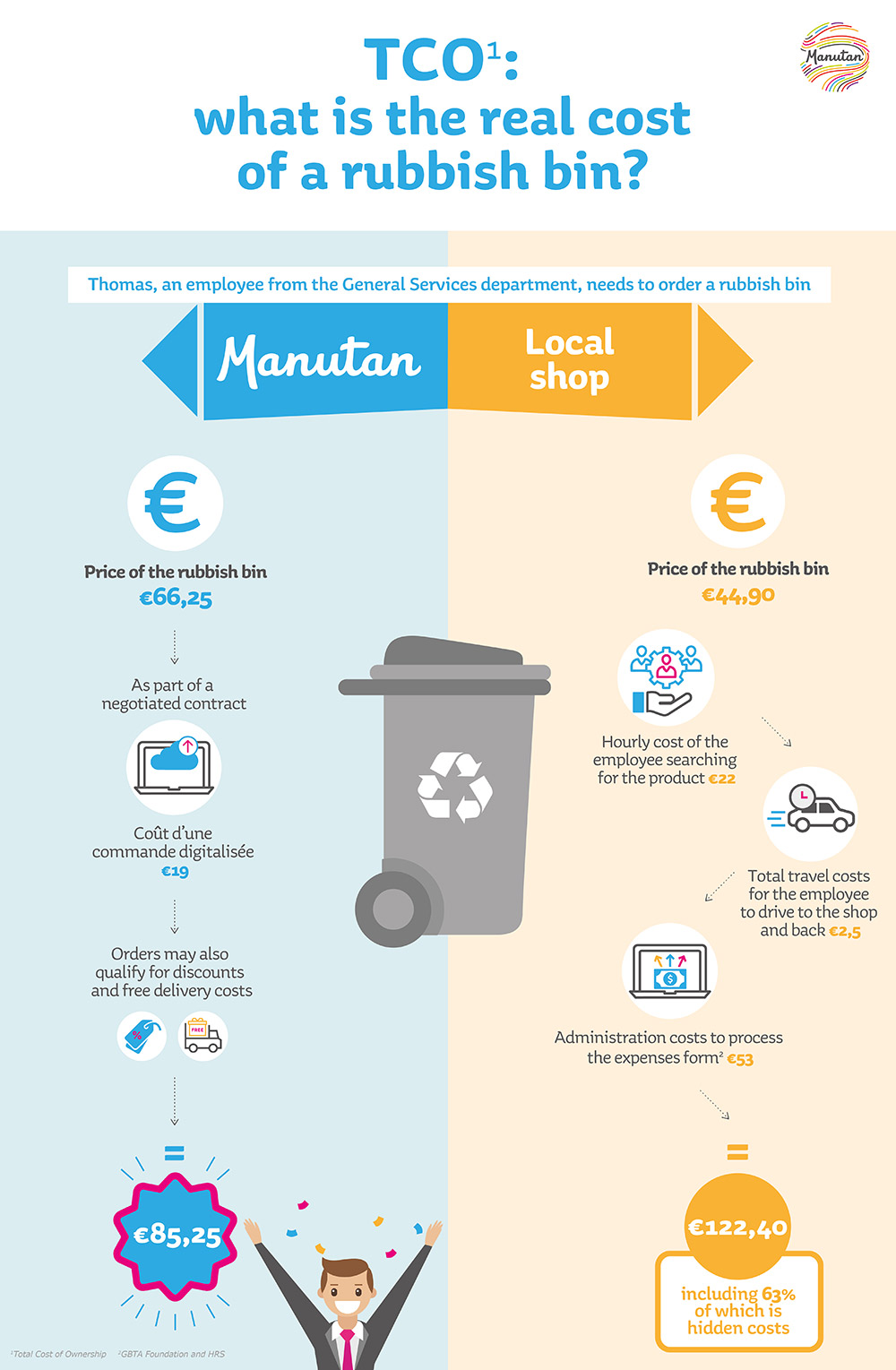Non-strategic and one-off purchases within companies are often made outside the processes implemented by procurement departments. They are often unscheduled purchases and involve considerable hidden costs, thereby increasing the TCO (Total Cost of Ownership). Using the example of a simple bin, savings of no less than 30% are possible by adopting a TCO approach…

What are unscheduled purchases?
Unscheduled purchases include any products and services that companies need infrequently or on an ad-hoc basis to deal with everyday situations.
Unscheduled purchases are well-named: Often made as a matter of urgency, their management is not structured and they often fly under procurement departments' radars. Practically speaking, these may be purchases made from unlisted suppliers, via an unapproved channel or even at a price that is different from the one negotiated.
One of the key features of unscheduled purchases is that they account for almost 80% of administrative costs. For this reason, adopting a TCO approach for these purchases is the obvious choice.
63% of a TCO is made up of hidden costs
From water bottles to bins, it is always important to calculate the overall cost of a product over its entire life cycle. We must go beyond the simple purchase price and opt for a proper TCO approach by assessing the overall cost.
Our example in the infographic shows all the administrative costs that an unscheduled purchase from a local shop can generate: hourly cost of the employee searching for the product on the retail sites of nearby shops (€22), total travel costs for driving to the selected shop and back (€2.50), costs for the finance department to process the expenses form (€53) etc. In this case, 63% of the TCO is made up of hidden costs.
Ultimately, even if the purchase price of the bin in the local shop is cheaper than the price negotiated and approved by the procurement department, the opposite is true if a TCO outlook is adopted. The customer can save 30% by purchasing the bin from a listed supplier and through an approved channel.
Even for tail spend that seem trivial (office furniture and supplies, small tools, hygiene products etc.), the TCO approach is still key to creating value. It is a popular approach for procurement departments, but often misunderstood by internal users…







